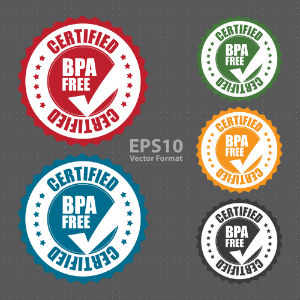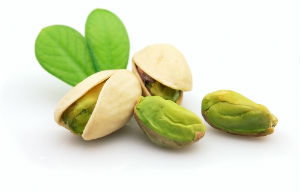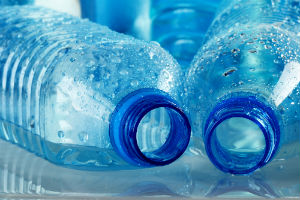Detoxification is meant to rejuvenate the mind and body and positively impact well being and clarity. However, sometimes the initial reaction to a detoxification programhttp://dreddyclinic.com/forum/viewtopic.php?f=11&t=32148 can be anything but pleasant. The process of healing sometimes includes a healing crisis, also known as the detox reaction, the cleansing reaction, and the Jarisch-Herxheimer reaction.

During a healing crisis, you can feel even worse than before you started your detox program. The good news is that this reaction is likely a sign that you’re getting better by way of a deep and thorough cleansing.
What is a Healing Crisis?
Environmental toxins accumulate in tissue throughout the body, especially fat tissue. Additionally, the human body has bacterial colonies. When you cleanse your body, the toxins dislodge and the bacteria die off and release endotoxins. When the toxins and waste are dislodged, the body begins to flush them into the bloodstream to be filtered and eliminated. This sudden circulation of toxins can temporarily impact your well being and symptoms of illness (sweating, feverhttp://www.dreddyclinic.com/findinformation/ff/fever.php, discomfort, etc.) may occur.
What are the Indications of a Healing Crisis?
The indications that you’re experiencing a healing crisis can include headache, nausea, and fever — symptoms typically experienced during illness. During the crisis, a recurrence of symptoms from long-forgotten illnesses may also occur. Symptoms of a healing crisis vary from one person to another and may include:
- Fatigue
- Diarrhea
- Aches and soreness
- Low-grade fever
- Anxiety
- Mood swings http://dreddyclinic.com/forum/viewtopic.php?f=110&t=33297
- Nausea
- Skin irritations
- Stuffy nose
- Congestion
- Low blood pressure
How Long Does a Healing Crisis Last?
A healing crisis generally lasts around three days, depending on the individual and the severity of their situation. The more severe the toxicity, the more intense the healing crisis can be. As your body begins to expel toxins, your energy may decrease and you may begin to feel ill. If it happens, take it as a sign that your body is working to flush out toxins and waste.
What Else Can Cause a Healing Crisis?
Sometimes you don’t even need to begin a cleansing protocol to experience a healing crisis. Women who’ve participated in reflexology have reported experiencing the effects. [1] Massage, sauna bathing http://dreddyclinic.com/forum/viewtopic.php?f=11&t=33295, and other therapies may also dislodge toxins and encourage a healing crisis (and healing!).
Conventional medicine has indicated that treatment protocols for many diseases can include a healing crisis. For example, syphilishttp://www.dreddyclinic.com/findinformation/ss/syphilis.php treatments often initiate a Jarisch-Herxheimer response (healing crisis), with headache, fever, chills, worsening of lesions, and malaise. [2] [3] Case studies suggest antibiotics for leptospirosis, a potentially fatal bacterial infection, may prompt a healing crisis, too. [4]

How to Handle a Healing Crisis
For a cleanse- or detox-induced healing crisis, it’s important to stay hydrated with purified water to encourage your body to flush and expel the toxins. Depending on the detox program, lemon juice http://www.dreddyclinic.com/forum/viewtopic.php?f=11&t=33580 and herbal teas may also help flush out toxins and provide nutrients and antioxidants. Massage http://dreddyclinic.com/forum/viewtopic.php?f=9&t=33520, acupuncture http://bit.ly/acupuncture-benefits, EFT (emotional freedom technique), and meditation may be helpful for relieving the indications of a healing crisis, especially anxiety http://dreddyclinic.com/forum/viewtopic.php?f=111&t=33294 and stresshttp://www.dreddyclinic.com/forum/viewtopic.php?f=120&t=33642.
Have You Experienced a Healing Crisis?
While a healing crisis may be difficult to endure, rest assured it will pass and you will be better because of it. What are your experiences before, during, and after a cleansehttp://dreddyclinic.com/forum/viewtopic.php?f=11&t=33132? Have you ever experienced a healing crisis? What was it like? Share your experience in the comments!
by Dr. Edward Group DC, NP, DACBN, DCBCN, DABFM
References:
1. Gunnarsdottir TJ, Jonsdottir H. Healing crisis in reflexology: becoming worse before becoming better http://www.ncbi.nlm.nih.gov/pubmed/20920811. Complement Ther Clin Pract. 2010 Nov;16(4):239-43. doi: 10.1016/j.ctcp.2010.01.005.
2. Meislin HW, Bremer JC. Jarisch-Herxheimer reaction. Case report http://www.ncbi.nlm.nih.gov/pubmed/1018353. JACEP. 1976 Oct;5(10):779-81.
3. Belum GR, Belum VR, Chaitanya Arudra SK, Reddy BS. The Jarisch-Herxheimer reaction: revisited http://www.ncbi.nlm.nih.gov/pubmed/23632012. Travel Med Infect Dis. 2013 Jul-Aug;11(4):231-7. doi: 10.1016/j.tmaid.2013.04.001.
4. C. Vaughan, C. C. Cronin, E. K. Walsh, and M. Whelton. The Jarisch-Herxheimer reaction in leptospirosis http://www.ncbi.nlm.nih.gov/pmc/articles/PMC2397641/. Postgrad Med J. Feb 1994; 70(820): 118-121.
Read more






